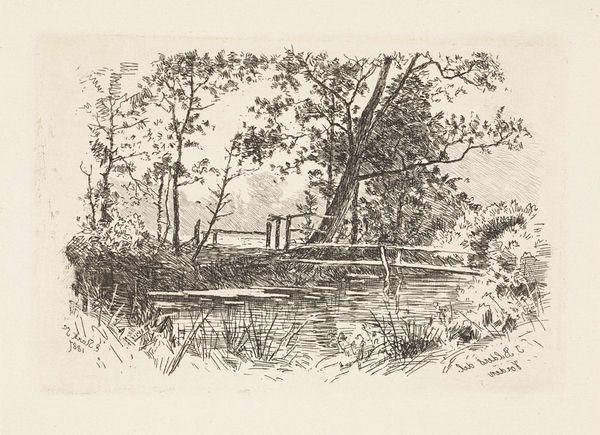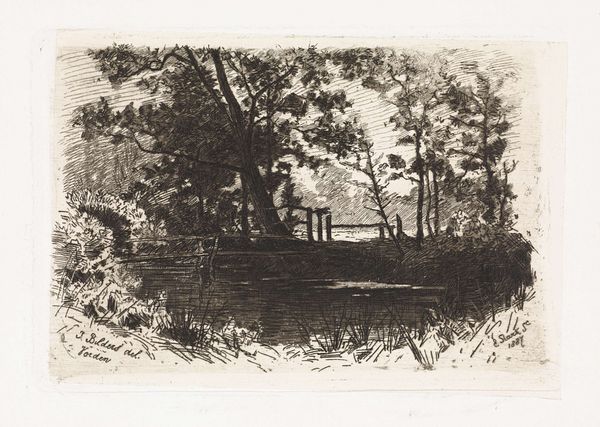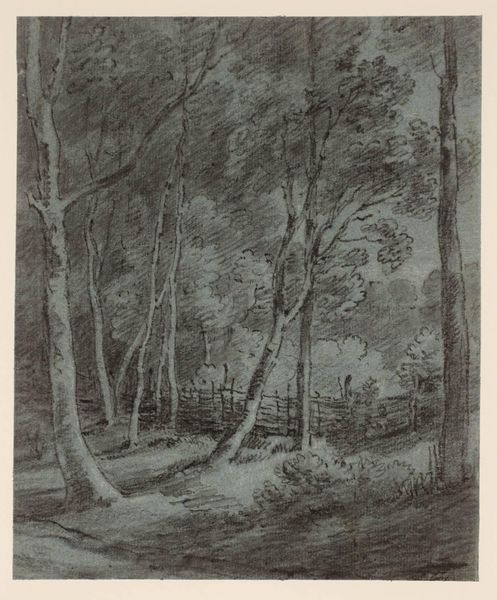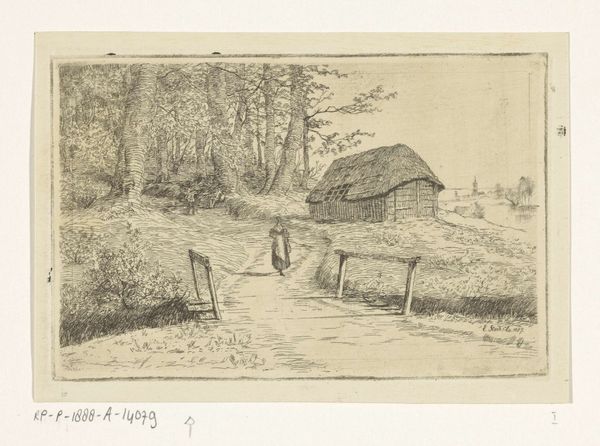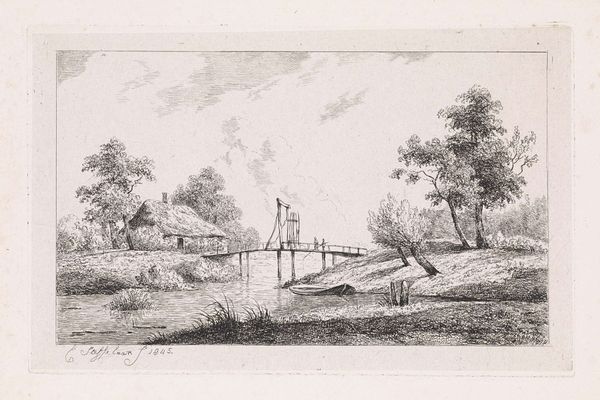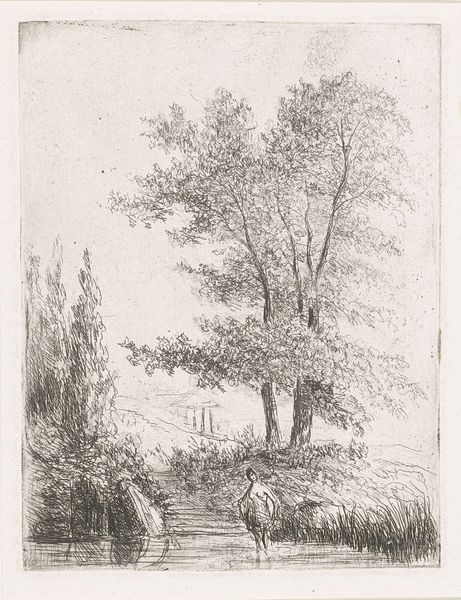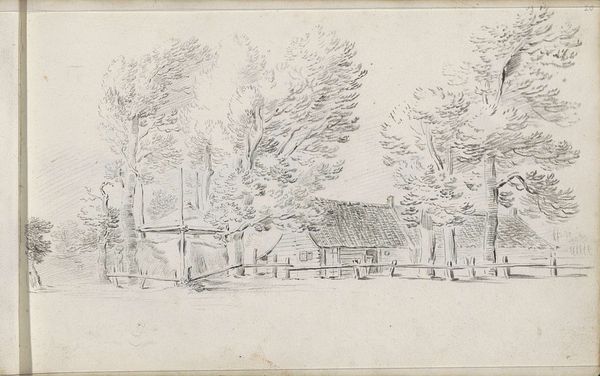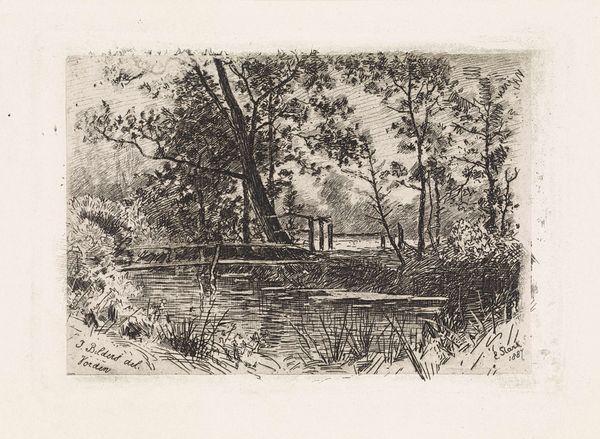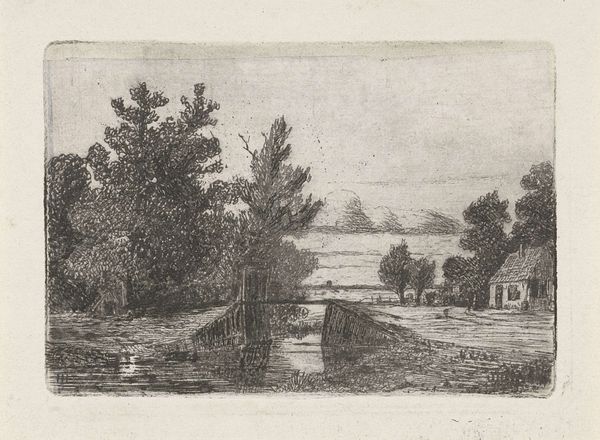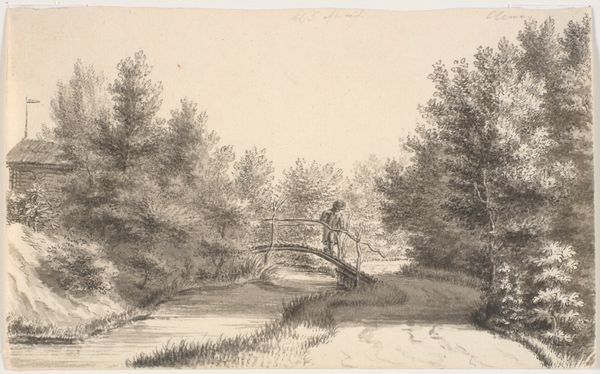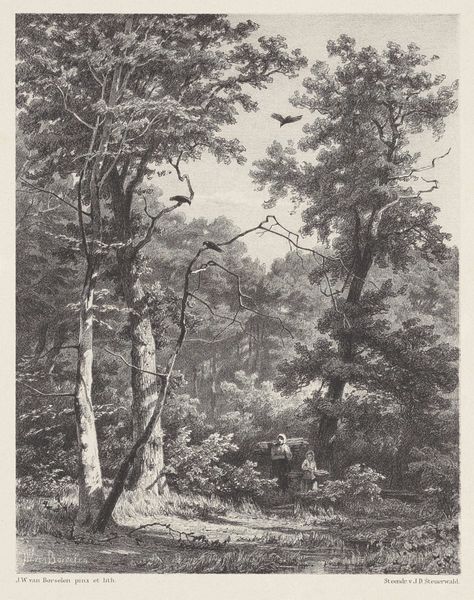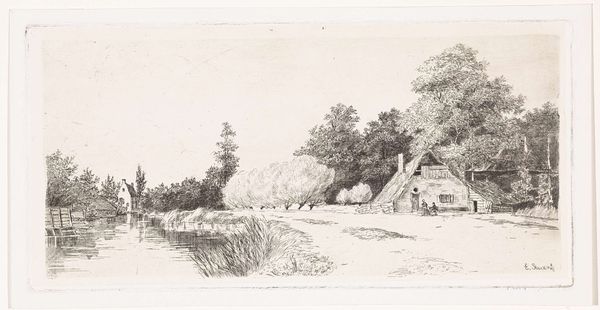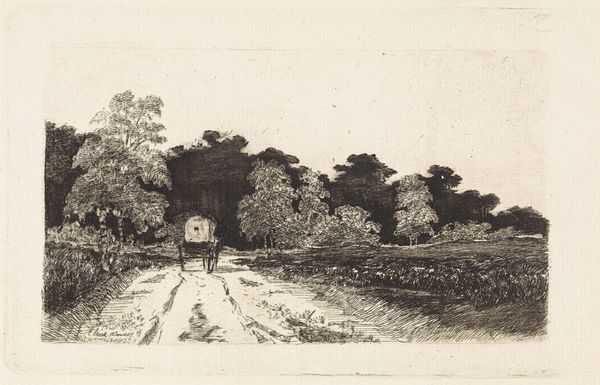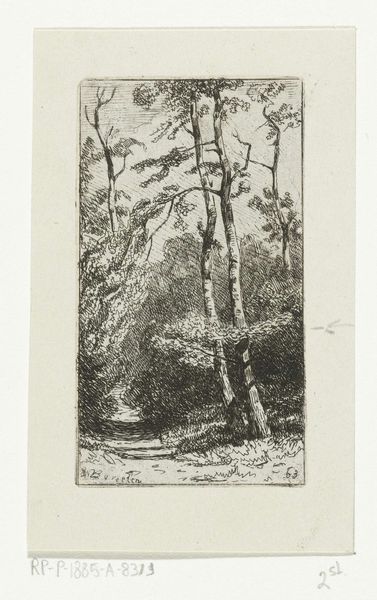
drawing, print, etching
#
drawing
# print
#
etching
#
landscape
#
line
#
realism
Dimensions: height 151 mm, width 277 mm
Copyright: Rijks Museum: Open Domain
Curator: Before us hangs “Weggetje langs een bos te Cronensteyn,” or "Path along a forest at Cronensteyn," a line drawing from the Rijksmuseum collection by Jacobus Ludovicus Cornet. The piece, created sometime between 1825 and 1882, appears to be an etching and a print. Editor: It strikes me immediately as understated yet immersive. The fine lines create a textured surface that invites close examination. I’m intrigued by the stark contrast between the open path and the dense thicket. Curator: It’s fascinating to consider this work within the context of 19th-century Dutch art. Cornet lived through a period of immense social and political change in the Netherlands. The detailed rendering, while realistic, can be viewed as an artist's attempt to portray and, in effect, to 'archive' the natural world amidst rapid modernization. The work feels somewhat elegiac, perhaps romanticizing a past, pre-industrial era. Editor: I see that. Formally, I’m drawn to the repeated horizontals and verticals - the lines of the fences echoing the vertical tree trunks - yet those are balanced by the diagonals of the fallen branch. Curator: It seems more to focus on Realism, given his approach of accurately portraying the observed rural landscape of his era. While his piece seems simplistic, this art, given the time it was created, was crucial in solidifying landscape portrayal as a socially valuable subject within a broader historical and societal context. How the landscapes were preserved on these drawings also meant the landscapes that would fade were essentially archived in time through Cornet’s techniques. Editor: And the lack of a central focus actually works to create an environment, pulling us in from all sides, as does its panoramic framing...it's a very sophisticated arrangement of simple graphic elements, really. It encapsulates nature, inviting reflection on natural forms and how these are carefully placed together. Curator: Yes, through this perspective, you begin to consider Cornet's work beyond the literal. Perhaps it suggests a narrative about mankind’s relationship with nature itself. Editor: I hadn’t considered the subtle narrative it could imply!
Comments
No comments
Be the first to comment and join the conversation on the ultimate creative platform.
